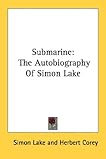For centuries ships at sea have survived storms not by fighting against heavy weather, but by using the forces of the storms to ride through them. In most cases, the absolute worst thing a sailor can do is nothing.
Capsizing is greatest danger to a vessel during a storm. If a ship comes broadside. or a-beam, to the storm waves, it can capsize when it heels (rocks) excessively and can no longer right itself.
Waves approaching from either the stern or bow can eventually rotate a vessel until is is broadside to the storm waves. When a vessel is broadside to the storm waves, it is said to be "broaching" them.
A number of different tactics recommended by sailing experts can be used to keep a vessel oriented away from or toward storm waves. I never put in any helm time in during heavy seas, so I defer to the experts on this subject.
There are three active methods used to maintain headway. The first is to reduce sails or run with bare poles. In this method the sail area is reduced by taking in, or reefing, the sails. This keeps the sails from shredding or perhaps damaging the masts and rigging. In very heavy wind conditions, the presence of the rigging and masts offers enough sail area to keep the ship underway so the sails can be completely furled..
The second method is to run with the wind and surf the waves. When running with the wind, the captain sets a course away from the storm. Clipper ship captains used this method to exploit storm system energy and get high speeds of 20 knots or better. There is a danger with running with the wind. You can begin to overtake waves and in very heavy seas slide down the wave and into the trough. A vessel is then in danger of slamming into the back side of the next wave. The trick is to surf the wave at a an angle to lessen the force of the entry into the next wave, but too much of an angle might set the ship up for a broach.
The third active method is to run warps and use a drogue. A warp is a heavy towing cable that can be played out of the stern and hopefully create enough drag to keep the vessel from broaching. A drogue is a small conical device or fabric parachute-like device that when towed in the water acts as a brake to keep the stern from sliding and creating a broach condition. Running warps alone is being disputed these days, but has been conventional wisdom for some time. Using a drogue is a very good tactic.
If the storm is just too big, there are passive ways to weather out the storm. With these methods, you are trying to ride out he storm rather than make headway.
The first passive method is to "heave to." We've all heard this phrase with pirate gibberish, but it's really a cool thing. You can actually use the wind energy against sails to cancel itself out when balanced against the tilt of the rudder. Heaving to can be used to stop a vessel that's underway, or keep the vessel nearly stationary with very little forward momentum.
The second passive method is to use a sea anchor off the bow. A sea anchor is a drogue that's large enough to actually stop the forward movement of the vessel. This again keeps the vessel perpendicular to the waves, avoiding a breach condition.
The third passive method calls for hositing a small sail at the stern of the vessel. The wind action against the stern sail will cause the vessel to align itself into the waves. This can be used at anchor to keep the vessel facing the wind.
The final passive method is to simply hunker down. This is called lying a-hull. In this method, the sails are furled and the vessel is simply allowed to drift with the rudder turned leeward. No sea anchor is used. The main danger to the vessel is being caught in a breach condition. Lying a-hull is a last effort and very controversial storm tactic.
The crew of tall ships have to protect the yards in heavy seas and men aloft would frequently have to disassemble the yards and pass them down to the deck below. Additionally, taking down the topmast was not an uncommon storm tactic and is recounted in the sailing classic, Two Years before the Mast.
Wednesday, April 21, 2010
Subscribe to:
Post Comments (Atom)














No comments:
Post a Comment